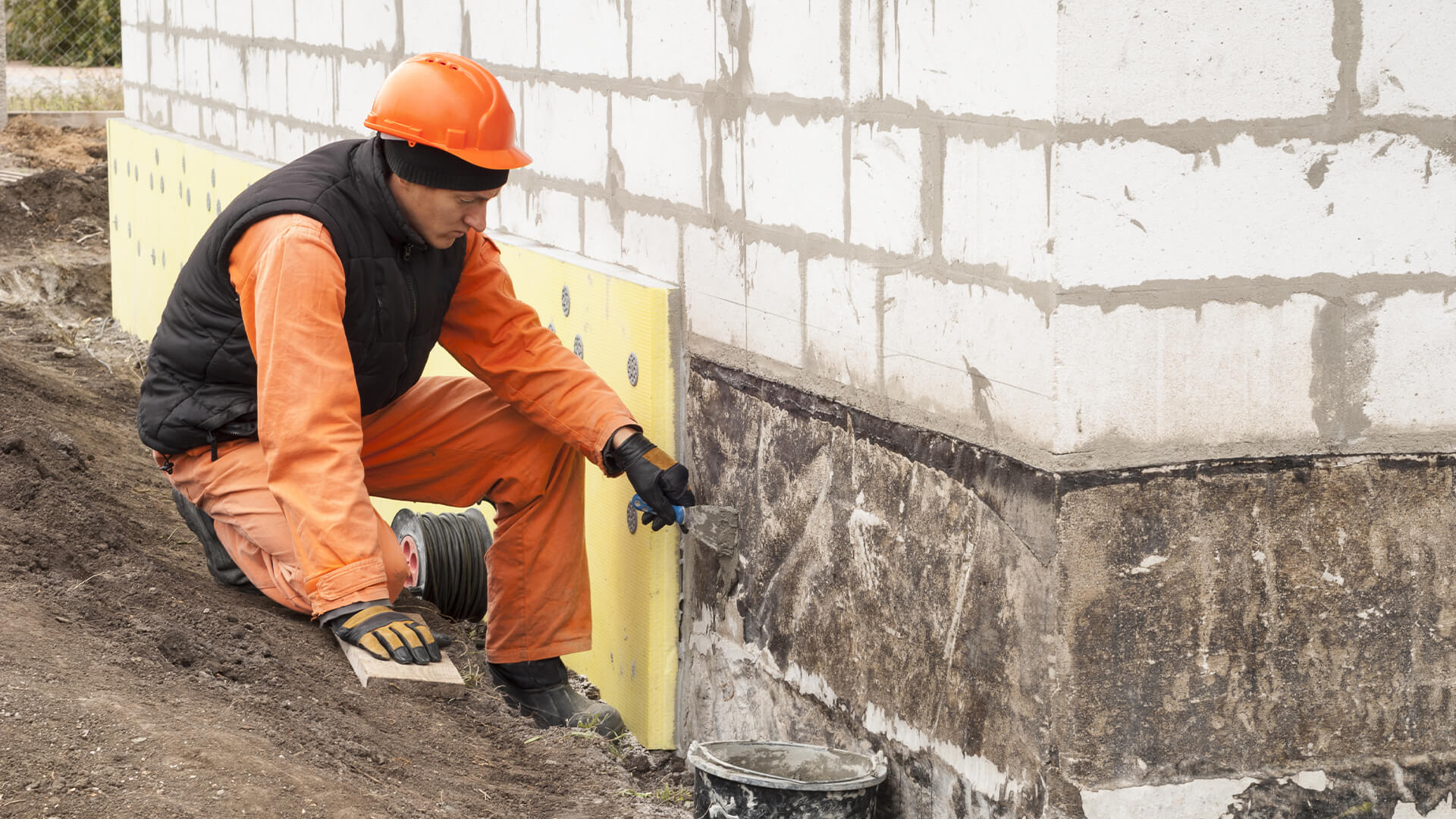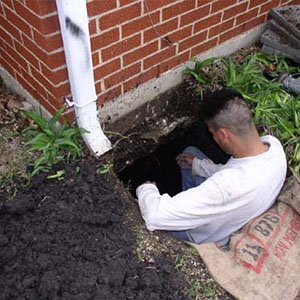Foundation Repair Oklahoma City OK: Tips for Locating the Right Professionals
Foundation Repair Oklahoma City OK: Tips for Locating the Right Professionals
Blog Article
Checking Out Different Methods of Structure Repair for Different Soil Types
Structure repair work is an important facet of preserving structural stability, especially when thinking about the varied difficulties postured by different dirt kinds. The intricacy of dirt habits under differing conditions requires a tailored strategy to repair, making sure optimal options such as helical piers for unsteady dirts or chemical grouts for cohesive layers. Nonetheless, the inquiry remains: just how do we establish the most efficient approach for each and every one-of-a-kind circumstance? Recognizing the interplay between dirt qualities and fixing techniques is important, yet there is more to reveal in the pursuit for sustainable solutions. What variables really dictate the option of method?
Recognizing Soil Kinds
Dirt kinds play a critical role in the security and durability of building foundations, making it essential for property owners and construction professionals to understand their features and habits. The interaction between dirt and structure can figure out the structural integrity of a structure. There are numerous soil kinds, each with unique physical residential properties that impact how structures are developed and preserved.
Granular soils, such as sand and crushed rock, offer excellent drainage and are commonly thought about secure. In comparison, natural dirts like silts and clays display various habits.
Rocky dirts, recognized for their toughness and stability, offer superb support for structures but might need specific tools for excavation. On the other hand, fertile dirts, which are a well balanced combination of sand, silt, and clay, frequently provide positive problems for foundation assistance as a result of their modest drainage residential or commercial properties.

Comprehending these dirt types is crucial for selecting ideal foundation fixing techniques, guaranteeing the sturdiness and safety and security of frameworks gradually.
Challenges With Expansive Clay
Amongst the different soil kinds, large clay provides one-of-a-kind difficulties for structure security because of its propensity to undertake considerable volume adjustments with moisture variant. This kind of dirt swells when damp and contracts when dry, which can put in significant pressure on frameworks. These fluctuations can lead to foundation splitting, heaving, and negotiation problems, positioning substantial risks to the structural stability of buildings.
The difficulties with large clay are exacerbated by its plasticity index, which measures the soil's ability to alter form and quantity. A high plasticity index shows greater capacity for movement, raising the possibility of damages to foundations. This is specifically bothersome in areas experiencing extreme or regular climate changes, where cycles of wet and dry conditions prevail.
In addition, the depth of expansive clay layers can vary, complicating the analysis and preparation of proper foundation repair service methods. These intricacies require a detailed geotechnical examination to ensure effective foundation repair techniques are implemented, emphasizing the significance of dealing with expansive clay obstacles with knowledge and treatment.
Solutions for Sandy Soils
Sandy soils, defined by their large particle dimension and reduced cohesion, existing distinct difficulties for structure stability as a result of their propensity for moving and disintegration. These properties require specialized foundation repair work techniques to ensure structural stability. One effective remedy is making use of deep foundation systems such as helical piers or driven heaps. By anchoring the structure to deeper, much more stable dirt layers, these systems can provide the essential support to combat the shifting nature of sandy dirts.
One more suggested technique is the application of dirt stabilization methods. Chemical grouting, for example, includes injecting a maintaining representative into the dirt, which enhances communication and decreases leaks in the structure. This process aids to solidify the sandy substrate, thereby reducing the threat of erosion and activity.
In addition, mounting correct drainage systems is critical in sandy soil conditions. Making certain sufficient water drainage can prevent water build-up around the structure, which usually intensifies erosion and soil displacement. Techniques such as French drains pipes or surface area grading can be employed to direct water far from the structure border.
Dealing With Clearing Up in Loamy Soils
Fertile dirts, recognized for their well balanced mix of silt, clay, and sand, use an abundant base for numerous structures however can in click for more info some cases result in structure settling as a result of their unique composition. This well balanced structure provides superb drain and nutrient retention, making it optimal for agriculture and landscaping. This very same feature can end up being troublesome for foundations, as shifts in dampness web content can trigger the soil to expand or agreement, leading to working out.
Accurate soil screening is important to determine the certain make-up and wetness content of the loam. When information is collected, implementing appropriate drainage services is necessary to keep consistent dampness levels, consequently reducing the threat of dirt tightening or growth.

Innovative Repair Strategies
In the realm of structure repair work, ingenious techniques are consistently being established to deal with the complex tests positioned by numerous dirt problems. As dirt kinds differ dramatically in their structural properties, standard techniques may not always suffice. The development of brand-new technologies in structure fixing provides a lot more customized solutions, making sure stability and durability.
One notable advancement is the use of helical piers, which are specifically efficient in unpredictable or extensive soils (foundation repair okc). These piers are screwed into the ground up until they get to a secure layer of soil, More Info using solid support for the foundation above. This method reduces disturbance and is adaptable to different soil kinds, making it a functional solution
An additional cutting-edge technique is the application of polyurethane foam shot. This approach entails infusing high-density polyurethane foam underneath the foundation to fill voids and support the framework. It is a much less intrusive option to conventional foundation, supplying fast installment with very little disruption to the surrounding location.
In addition, dirt stabilization methods, such as the use of chemical grouts, have actually gotten traction. These compounds improve soil stamina and minimize leaks in the structure, protecting against future shifting. Collectively, these innovative repair work methods offer efficient services for the diverse difficulties presented by differing soil conditions.
Conclusion

Structure repair is an essential aspect of maintaining structural honesty, specifically when considering the diverse obstacles postured by different soil types (foundation repair Oklahoma). The complexity of soil habits under varying conditions demands a customized approach to repair, guaranteeing ideal options such as helical piers for unpredictable dirts or chemical cements for natural layers. By securing the foundation to deeper, extra secure dirt layers, these systems can give the essential assistance to neutralize the shifting nature of sandy soils
Foundation repair work needs cautious consideration of soil types why not find out more to guarantee stability and longevity. Chemical grouts enhance soil strength and reduce permeability in cohesive soils.
Report this page